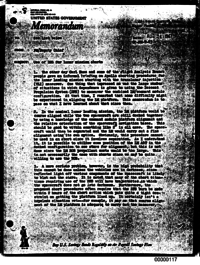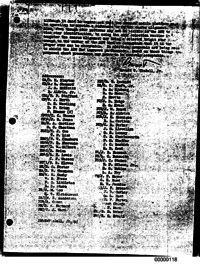See list belowAUG 24 196767-FM-T63FM/Deputy ChiefUse of DPS for lunar mission aborts
1. The other day Carl Huss and some of the flight Analysis Branch people gave an internal briefing on Apollo aborting procedures for the lunar landing mission starting with the translunar injection (TLI) maneuver. One thing that impressed me was the large number of situations in which dependence is given to using the Descent Propulsion System (DPS) to maneuver the combined LM/command module configuration. At that time, I remarked that some difficulty might be experienced in aligning the LM platform. This memorandum is to pass on what I have learned about that since then.
2. In the nominal lunar landing mission, the LM platform would be coarse aligned while the two spacecraft are still docked together by using a knowledge of the command module platform alignment and the relative orientation of the spacecraft navigation bases. This should be good to within something like 2° in all axes. The space- craft would then be separated and the LM would carry out a fine alignment using its own optics. Obviously, this procedure cannot be used in an abort since it involves separation. As I understand it, it is possible to utilize some position of the LM AOT in the docked configuration to see stars for alignment, but this is not done since the LM RCS propellant costs would be too large. This is not necessarily the case with aborts since we may be quite willing to use the RCS.
3. A more serious problem, however, is the high probability that this cannot be done unless the vehicles are in darkness, since reflected light off various components of the spacecraft is likely to blot out the stars. It is noted that many of the abort situa- tions requiring use of the DPS will have trajectories in which the spacecraft does not go into darkness. Furthermore, the proposed abort procedures often require that the DPS burn be made within 2 hours of the abort action which puts quite a tight con- straint on getting the platform lined up. It certainly isn't a hopeless situation yet—for example, it may be that coarse align- ment of the LM platform is adequate to carry out the maneuver, although it must be emphasized that the command module platform must be operating to provide a reference to do the coarse alignment. Also, even though star patterns may not be visible in the AOT to pro- vide star identification, by using the star selection routine in the computer the coarse alignment may bring a selected bright star close enough to the center of the AOT that an assumption that it is the proper star may be acceptable. In addition, proposals are being made to shield the AOT for improved performance. Based on these things the proposed abort procedures may prove to be entirely acceptable.
- Jun 28, 1968 – Relative orientation of the LM and CSM navigation bases (3.7σ)
- Jan 20, 1967 – Why is it everyone who loves radar wears a white hat? (3.4σ)


